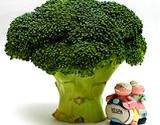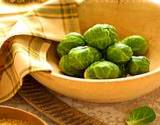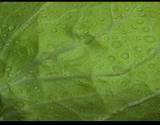|
Grandma's Antioxidant ListClick here to read about the benefits of antioxidants . Click here to read about the good, bad and ugly free radicals .
Antioxidant List
|
 |  |  |
Grandma's Antioxidant List
Herbs, Vitamins and Minerals M thru Z
Melatonin
Among the newest antioxidants to be discovered, the hormone may also be the most efficient free radical scavenger that has thus far been identified. While most antioxidants work only in certain parts of certain cells, melatonin can permeate any cell in any part of the body. In animal experiments, it has been shown to protect tissues from an amazing array of assaults. Within the cells, melatonin provides special protection for the nucleus - the central structure that contains the DNA. Thus, it protects the structure that enables a damaged cell to repair itself. Melatonin also stimulates the enzyme glutathione peroxidase , another antioxidant.
Oligomeric Proanthocyanidins
Oligomeric proanthocyanidins (OPCs) are naturally occurring substances present in a variety of food and botanical sources. They are unique flavonols that have powerful antioxidant capabilities and excellent bioavailability. Clinical tests suggest that OPCs ay be as much as fifty times more potent than vitamin E and twenty times more potent than vitamin C in terms of bioavailable antioxidants activity. In addition to their antioxidant activity, they strengthen and repair connective tissue, including that of the cardiovascular system, and they moderate allergic and inflammatory responses by reducing histamine production.
OPCs are found throughout plant life, however, the two are pine bark extract (Pycnogenol) and grape seed extract. Pycnogenol was the first source of OPCs discovered, the process for extracting it was patented in the 1950s. As a result, even though Pycnogenol is a trademarked name for pine bark extract, the term is often used informally to refer to other OPC sources as well, most notable grape seed extract.
Pycogenol
See under Oligomeric Proanthocyanindins in this section.
Selenium
A partner and synergist with vitamin E , selenium is also an essential component of the antioxidant enzyme glutathione peroxidase (each molecule of this enzyme contains four atoms of selenium). This enzyme targets harmful hydrogen peroxide in the body and converts it into water. It is particularly important guardian of blood cells and of the heart, liver, and lungs. Selenium also stimulates increased antibody response to infection.
Superoxide Dismutase
Superoxide dismutase (SOD) is an enzyme. SOD revitalizes cells and reduces the rate of cell destruction. It neutralizes the most common, and possibly the most dangerous, free radical - superoxide. It also aids in the body's utilization of zinc , copper , and manganese . SOD levels tend to decline with age, while free radical production increases. Its potential as an anti-aging treatment is currently being explored.
There are two types of SOD: copper/zinc SOD (CU / ZU SOD) and manganese SOD (Mn SOD). Each of these enzymes works to protect a particular part of the cell. Cu / Zn SOD protects the cytoplasm, where free radicals are produced as a result of various metabolic activities. Mn SOD is active in protecting the mitochondria of the cells, which contain the cells' genetic information and act as the site of cellular energy production.
SOD occurs naturally in barley grass, broccoli, Brussels sprouts, cabbage, wheatgrass, and most green plants. It is also available in supplement form. SOD supplements in pill form must be enteric coated - that is, coated with a protective substance that allows the pill to pass intact through the stomach acid into the small intestines to be absorbed. Cell Guard from Biotec Food Corporation is a good source of SOD.
Vitamin A and Beta-Carotene
Vitamin A and its precursor, beta-carotene , are powerful free radical scavengers. Vitamin A also is necessary for healthy skin and mucous membranes, the body's first line of defense against invading miroorganisms and toxins, and promotes the immune response. Beta-carotene and vitamin A destroy carcinogens (cancer-causing substances), guard against heart disease and stroke, and lower cholesterol levels.
Vitamin C
Vitamin C is a very powerful antioxidant that also protects other antioxidants, such as vitamin E . The cells of the brain and spinal cord, which frequently incur free radical damage, can be protected by significant amounts of vitamin C. Vitamin C acts as a more potent free radical scavenger in the presence of a bioflavonoid called hesperidin.
In addition to its role as an antioxidant, vitamin C detoxifies many harmful substances and plays a key role in immunity. It increases the synthesis of interferon, a natural antiviral substance produced by the body, and stimulates the activity of certain immune cells.
Zinc
In addition to having antioxidant properties on its own, zinc is a constituent of the antioxidant enzyme superoxide dismultase (SOD). It is also needed for proper maintenance of vitamin E levels in the blood and aids in the absorption of vitamin A. Other important functions of this mineral include the promotion of glandular and reproductive health and proper functioning of the immune system .
This antioxidant list has many of the most important antioxidants but it isn't complete. There are many more herbal antioxidants, vitamin antioxidants and mineral antioxidants along with a long antioxidant list of many natural antioxidants that are in our foods, teas and juices.
Return from Grandma's Antioxidant list to Benefits of Antioxidants
Return to Grandma's Herbal Remeideis Guide Home





